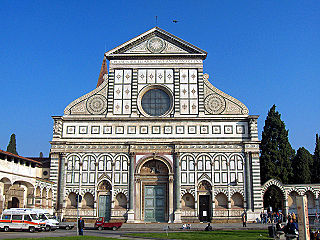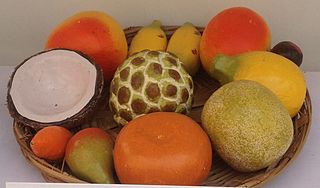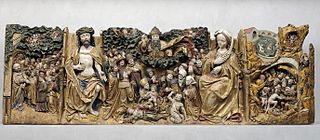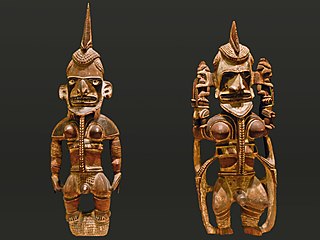 W
WThe Sanyi Wood Sculpture Museum is a museum of wooden sculpture in Sanyi Township, Miaoli County, Taiwan.
 W
WSanta Maria Novella is a church in Florence, Italy, situated opposite, and lending its name to, the city's main railway station. Chronologically, it is the first great basilica in Florence, and is the city's principal Dominican church.
 W
WThe Caritas Well, also known as the Caritas Fountain, is the oldest fountain in Copenhagen, Denmark. It was built in 1608 by Christian IV and is located on Gammeltorv, now part of the Strøget pedestrian zone.
 W
WChemamüll are Mapuche statues made of wood used to signal the grave of a deceased person.
 W
WThe cigar store Indian or wooden Indian is an advertisement figure, in the likeness of a Native American, used to represent tobacconists. The figures are often three-dimensional wooden sculptures several feet tall – up to life-sized. They are still occasionally used for their original advertising purpose, but are more often seen as decorations or advertising collectibles, with some pieces selling for hundreds of thousands of dollars. People within the Native American community often view such likenesses as a caricature or as depictions that perpetuate stereotypes, drawing an analogy to the African-American lawn jockey.
 W
WCristo Negro is a wooden statue of Jesus Christ in Iglesia de San Felipe, a Roman Catholic parish church located in Portobelo, Panama. The statue was found on the shores of the town's harbour. Life size, it is adorned with a robe that is changed twice a year, once during the Festival of the Black Christ and during Holy Week. Black Christ is venerated throughout the year, most particularly on October 21, during the Festival of the Black Christ.
 W
WTwo different crucifixes, or strictly, wooden corpus figures for crucifixes, are attributed to the High Renaissance master Michelangelo, although neither is universally accepted as his. Both are relatively small figures which would have been produced in Michelangelo's youth.
 W
WKigango is a carved wooden memorial statue erected by the Mijikenda peoples of the southeastern Kenya coast. The vigango, which can be stylized, abstracted human-form effigies and are placed vertically rising out of the earth, honor a dead member of the secret Gohu society, or the "Society of the Blessed".
 W
WKinnal Craft or Kinhal Craft, is a traditional wooden craft local to the town of Kinhal, or Kinnal, in Koppal District, North Karnataka, India.
 W
WKortunefookie is an interactive public art project, a large scale 4-foot (1 m) high fortune cookie made of red cedar, which grants users a printed fortune with a simple touch of a button; Kortunefookie’s social network creates the fortunes via the project's Web site. Inspired by the idea of the fortune cookie, the project was created to permit different users to share their thoughts and create a new kind of social ties. It is an interactive kiosk that issues short texts written by anonymous users on the Kortunefookie website that resemble the messages found in the fortune cookies, but each fortune from the Kortunefookie is different, unlike mass-produced fortunes in regular fortune cookies. Kortunefookie's Web site suggest users to send an innermost secret, a smarmiest wisecrack, a private prayer, or an outlandish prediction.
 W
WThe Last Judgement or Scene of Intercession is part of a 1510-1420 carved limewood altarpiece produced at Biberach. It is attributed to the Biberach Master or his studio and is now in the Museum of Fine Arts of Lyon.
 W
WThe Michle Madonna is the work of an unknown sculptor called the "Master of the Michle Madonna" who probably worked in Brno or Prague during the second third of the 14th century. The name of the sculpture, brought from Brno in 1856, relates to its non-original location in the parish church in Michle from where it was purchased by the National Gallery in Prague.
 W
WMbis is a type of wooden ancestor pole among the Asmat of the province of Papua, Indonesia. Figures of the dead are stacked along the pole, and a phallic symbol of fertility and power is included. The poles were carved to accompany the feast after a headhunting raid.
 W
WReclining Figure 1939 is an elmwood sculpture by Henry Moore. It is an abstracted reclining human figure, with looped head, shoulders, and sinuous body and limbs.
 W
WSaint Mary Magdalene Penitent Magdalene or The Beautiful German Woman is a painted wooden sculpture of Mary Magdalene by Gregor Erhart of the Ulm School. Probably originally intended for the church dedicated to the saint in the Dominican monastery in Augsburg, it later became part of Siegfried Lämmle's collection. The Louvre used art of a legacy from Émile Louis Sévène to acquire it in 1902 and it was returned to the Louvre after being taken to Germany during the Nazi Occupation on the orders of Hermann Goering.
 W
WThe Santa Croce Crucifix is a c.1406-1408 polychrome wood sculpture by Donatello, then a young artist just back from Rome. It is in the Cappella Bardi di Vernio just off the left transept of Santa Croce in Florence, Italy.
 W
WA serge is a ritual pole or tree at the Buryats and Yakuts. The serge is placed to indicate that the place in question has an owner. For example, a serge stands as a pole at the entrance to a yurt or at the gate of a house to indicate that as long as the serge is there, the family will live there. Traditionally, a serge cannot be destroyed, but can only decay.
 W
WSoyez amoureuses vous serez heureuses is a bas-relief wood panel carved and polychromed by French artist Paul Gauguin in the autumn of 1889. Gauguin depicts himself in the upper right, sucking his thumb and grasping the hand of the fleshy nude woman, a Polynesian or African, who seems to recoil in fear.
 W
WUli figures are wooden statues from New Ireland in Papua New Guinea. Like their neighbors to the north and south, the artistic traditions of the peoples of central New Ireland formerly focused largely around mortuary rites. In contrast to the intricate malagan carvings of the north, artists in central New Ireland produced less ornate but more permanent figures known as uli, which were kept and reused many times. No longer made today, uli were displayed as part of lengthy fertility rites involving the exhumation and reburial of human skulls, which accompanied the planting of sacred plants.
 W
WThe Virgin of Quito — also known as the Virgin of the Apocalypse, Winged Virgin of Quito, Dancing Madonna, and Legarda's Virgin — is a wooden sculpture by the Quiteño artist Bernardo de Legarda which has become the most representative example of the Quito School of art, developed in the Ecuadorian capital during the Spanish colonial era. This particular Virgin became a popular cult image which is still venerated — via innumerable replicas — throughout the northern Andes.
 W
WWooden tomb models were an Egyptian funerary custom throughout the Middle Kingdom in which wooden figurines and sets were constructed to be placed in the tombs of Egyptian royalty. These wooden models represented the work of servants, farmers, other skilled craftsman, armies, and religious rituals. The different types of models served as symbols and were believed to perform various functions for the deceased.